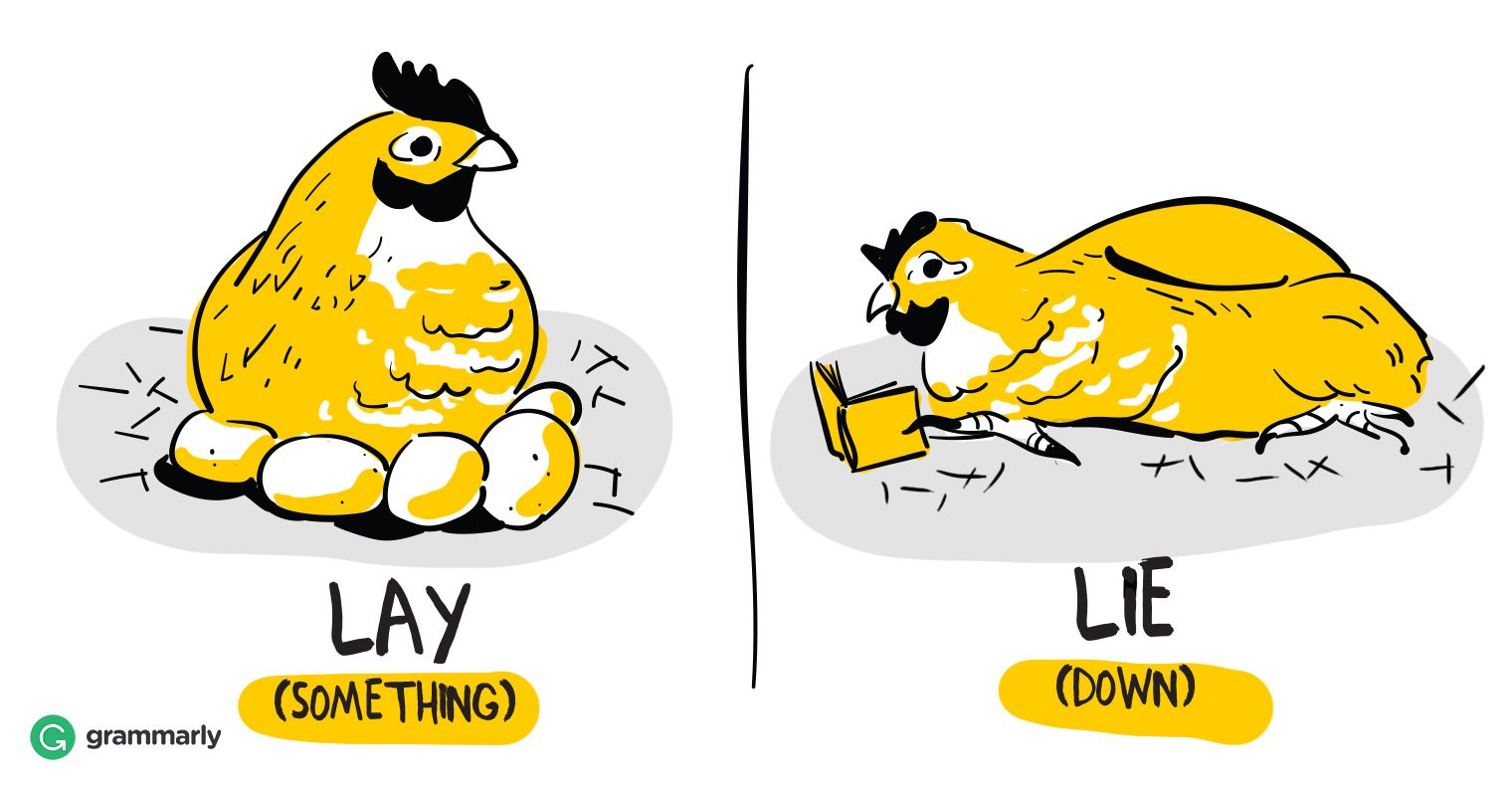In the English language, the distinction between "lay down" and "lie down" often confuses many speakers and writers alike. This confusion arises from the similarity in sound and meaning of these two phrases, yet they possess different grammatical functions. Understanding the correct usage of these terms is essential for effective communication.
In this article, we will explore the nuances of "lay down" and "lie down," providing clarity on when to use each phrase. We will delve into their definitions, grammatical rules, examples, and common mistakes to help you master their usage with confidence.
By the end of this article, you will have a comprehensive understanding of "lay down" and "lie down," allowing you to enhance your writing and speaking skills. Let’s dive in!
Table of Contents
- Definition of Lay Down and Lie Down
- Grammatical Rules for Lay Down and Lie Down
- Examples of Lay Down and Lie Down in Sentences
- Common Mistakes with Lay Down and Lie Down
- When to Use Lay Down
- When to Use Lie Down
- Summary of Lay Down vs. Lie Down
- Conclusion: Mastering Lay Down and Lie Down
Definition of Lay Down and Lie Down
To understand the difference between "lay down" and "lie down," it is crucial to define each term:
What Does Lay Down Mean?
"Lay down" is a transitive verb phrase, which means it requires a direct object. The verb "lay" refers to putting something down or placing it in a certain position.
What Does Lie Down Mean?
"Lie down," on the other hand, is an intransitive verb phrase, which means it does not require a direct object. The verb "lie" refers to assuming a position of rest or reclining.
Grammatical Rules for Lay Down and Lie Down
Understanding the grammatical rules for "lay down" and "lie down" is essential for using these terms correctly:
- Lay Down: Requires a direct object.
- Lie Down: Does not require a direct object.
Examples of Lay Down and Lie Down in Sentences
Let’s look at some examples to illustrate the proper usage of each phrase:
Examples of Lay Down
- She will lay down the book on the table.
- He laid down his tools after finishing the project.
Examples of Lie Down
- I need to lie down for a moment.
- After the long hike, we decided to lie down on the grass.
Common Mistakes with Lay Down and Lie Down
Many people often mix up "lay down" and "lie down." Here are some common mistakes to avoid:
- Using "lay down" when referring to oneself reclining (e.g., “I will lay down now” should be “I will lie down now”).
- Confusing the past tense forms (lay vs. laid) in sentences.
When to Use Lay Down
Use "lay down" when you are placing something down. Here are some scenarios:
- When you are putting an object on a surface.
- When instructing someone to place something down.
When to Use Lie Down
Use "lie down" when you are referring to reclining or resting. Situations include:
- When you feel tired and need to rest.
- When you are advising someone to take a break.
Summary of Lay Down vs. Lie Down
To summarize:
- Lay down: Requires an object (transitive).
- Lie down: No object required (intransitive).
Conclusion: Mastering Lay Down and Lie Down
In conclusion, understanding the difference between "lay down" and "lie down" is vital for effective communication. By recognizing their definitions, grammatical functions, and proper usage, you can avoid common mistakes and enhance your writing and speaking skills.
We encourage you to practice using these phrases correctly in your conversations and writing. If you found this article helpful, please leave a comment below, share it with others, or explore more articles on our site for further learning!
Thank you for reading, and we hope to see you again soon!




